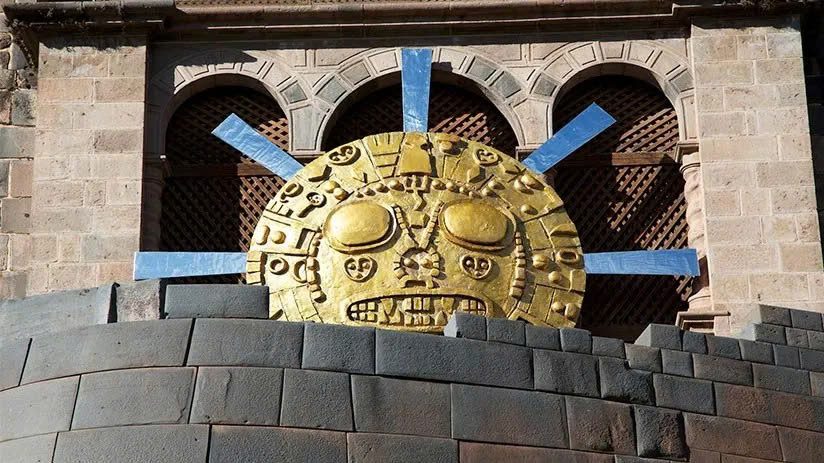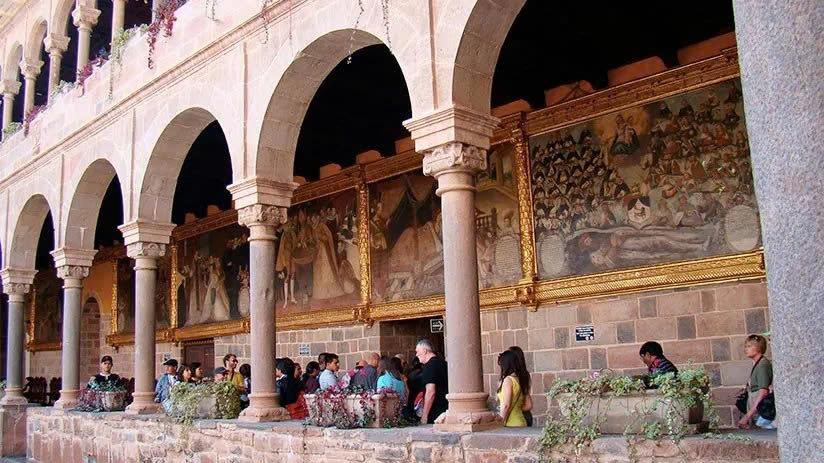In the heart of Peru’s ancient capital, where narrow cobblestone streets whisper tales of empires past, stands one of South America’s most extraordinary archaeological treasures. The Coricancha, once the most sacred temple of the mighty Inca Empire, continues to captivate visitors with its remarkable fusion of indigenous brilliance and colonial architecture.
The Sacred Heart of an Empire
Origins of the Golden Sanctuary

Long before Spanish conquistadors set foot in the New World, the site that would become Coricancha held profound spiritual significance. Originally known as Inticancha during the reign of the first Inca ruler, Manco Capac, this sacred ground was dedicated to Inti, the revered Sun God. However, it was under the visionary leadership of Pachacutec, the “World Transformer,” that the temple reached its magnificent proportions and earned its legendary name.
The word “Coricancha” itself tells a story of unimaginable wealth and devotion. Derived from the Quechua words “Quri” (worked gold) and “Kancha” (enclosed place), it literally means “Golden Enclosure” – a name that would prove prophetic as the temple’s walls and gardens gleamed with sheets of precious metal.
A Pilgrimage Destination Like No Other

Under Inca Huayna Capac’s rule, Coricancha evolved into the empire’s most prestigious pilgrimage destination. Nobles and high-ranking officials from across Tawantinsuyo would journey to this holy site, removing their sandals before entering the sacred grounds. The temple served as the beating heart of the Ceque system – a network of 328 sacred lines radiating outward like sun rays, connecting shrines and holy places throughout the vast empire.
The Marvel of Inca Architecture
Engineering Genius in Stone

The architectural mastery displayed at Coricancha remains breathtaking even today. Inca builders employed their signature techniques: trapezoidal doorways, precisely fitted stones without mortar, and walls that lean slightly inward for earthquake resistance. Using locally sourced diorite, andesite, and limestone, they created structures so perfectly engineered that they have withstood centuries of seismic activity.
The Celestial Design

From above, the temple complex resembled a magnificent sun with rays extending in all directions. This wasn’t mere artistic choice – it reflected the Incas’ sophisticated understanding of astronomy and their deep spiritual connection to celestial bodies. The complex sat strategically where the Tullamayo and Huantanay rivers converged, forming part of Cusco’s grand design as a sacred jaguar, with Coricancha as its tail and Sacsayhuamán fortress as its head.
The Sacred Chambers
The Temple of the Sun

At the complex’s heart stood the Temple of the Sun, where golden walls reflected the light of their celestial patron. Here, the magnificent golden statue of Punchao – representing the noon sun – was adorned with precious gems and surrounded by golden rays. Each dawn, priests would carry this sacred figure outside to greet the rising sun, returning it to its sanctuary at nightfall.
The Moon’s Silver Sanctuary

Adjacent to the sun temple lay the shrine dedicated to Quilla, the Moon Goddess. Its walls, covered in silver rather than gold, honored the belief that silver represented the moon’s tears. This temple housed equally precious artifacts and a silver statue of the lunar deity, creating a perfect celestial partnership with its golden counterpart.
Gardens of the Gods

Perhaps most remarkable was Viracocha’s garden, where an entire ecosystem crafted from precious metals paid tribute to the creator god. Life-sized golden corn stalks swayed in eternal harvest, while silver and gold animals – jaguars, llamas, monkeys, and shepherds – populated this metallic paradise. Every plant, every creature spoke of the Incas’ reverence for nature and their gods.
The Conquest and Transformation
The Spanish Arrival
When Spanish conquistadors entered Cusco in November 1533, they stood speechless before Coricancha’s golden splendor. Never had they witnessed such concentrated wealth. The temple’s precious metal covering reflected sunlight so brilliantly that it seemed to set the entire structure ablaze with divine fire.
From Sacred to Colonial
The conquest marked the end of Coricancha’s golden age. Spanish forces systematically looted the temple’s treasures before demolishing much of the structure. In 1534, they began construction of the Santo Domingo Convent directly over the ancient foundations, symbolically replacing indigenous beliefs with Christian doctrine.
Video
The Living Legacy
A Monument to Cultural Resilience

Today’s Coricancha stands as a powerful testament to cultural survival and adaptation. The seamless integration of Inca stonework with Spanish colonial architecture creates a unique monument where visitors can literally touch both civilizations. Original Inca walls support colonial arches, while ancient foundations anchor baroque facades.
Modern Pilgrimage

Contemporary travelers following in the footsteps of ancient pilgrims can easily reach this sacred site. Located just 400 meters south of Cusco’s main plaza along Avenida El Sol, Coricancha remains accessible to all who seek to understand Peru’s rich heritage. The temple continues to serve as a bridge between worlds, allowing modern visitors to connect with the spiritual and architectural genius of the Inca civilization.
Conclusion

The story of Coricancha is ultimately one of transformation, resilience, and enduring beauty. From its origins as a simple sun temple to its evolution into the empire’s most sacred site, through its destruction and rebirth as a colonial church, this remarkable complex continues to inspire wonder. Today, as visitors walk through its chambers where golden walls once blazed with divine light, they participate in a continuing story that began over 500 years ago – a story that reminds us that some places transcend time, remaining forever sacred to the human spirit.
Whether you’re drawn by its architectural marvels, its spiritual significance, or its role as a symbol of cultural convergence, Coricancha offers an unforgettable journey through the layers of Peruvian history. In its stones, both ancient and colonial, lies the enduring testament to human creativity, faith, and the eternal quest to touch the divine.

